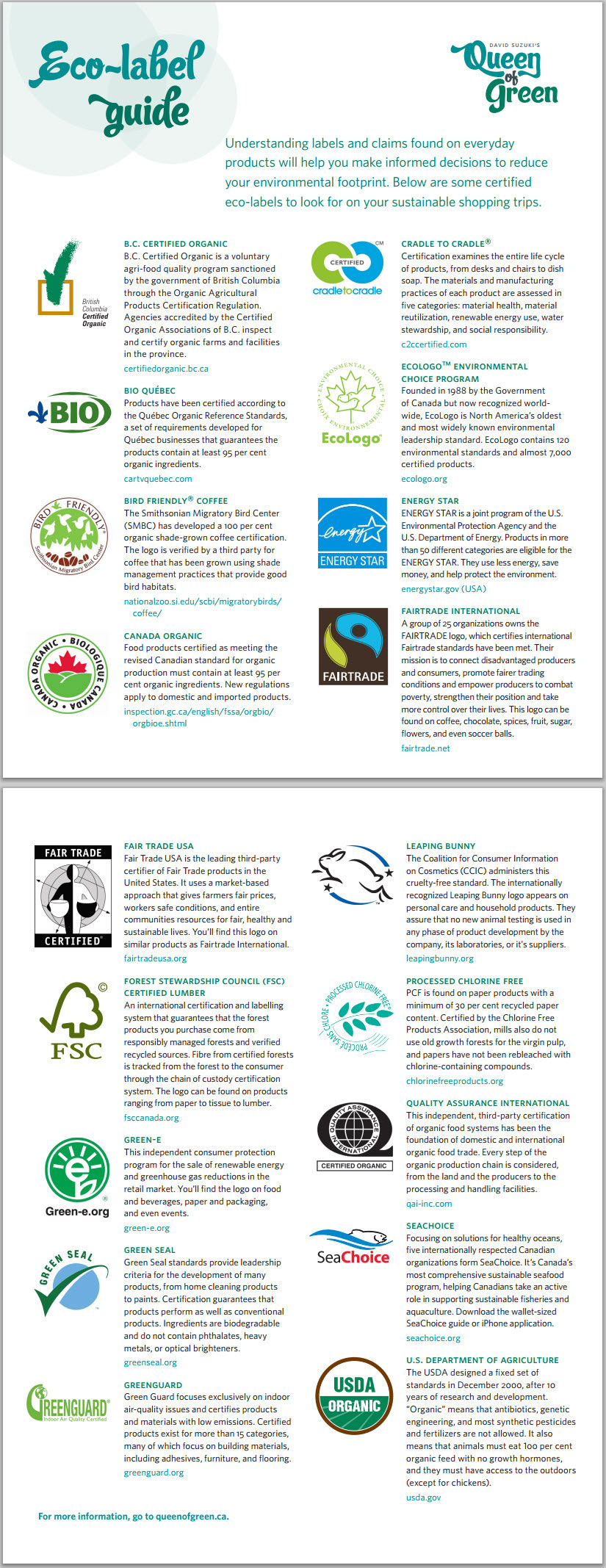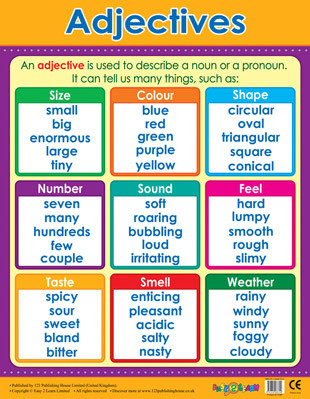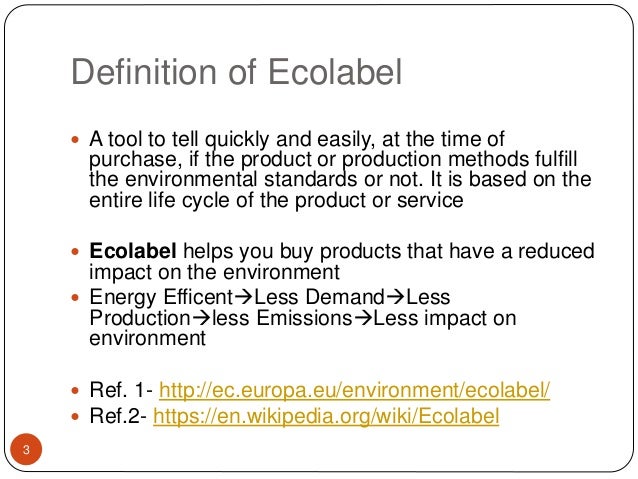39 3 types of eco labels
› user › VideoJugVideojug - YouTube Welcome to Videojug! Here you'll find the best how-to videos around, from delicious, easy-to-follow recipes to beauty and fashion tips. Green Hotels: What are eco-labels and what do they certify - Holiable Eco Tourism Australia is a certification scheme for accommodations and activities focused on nature-based tourism. The three levels are nature tourism, ecotourism and advanced ecotourism. Licensees are awarded for a period of one year. Green certifications also exist for green destinations, clean beaches and harbours or eco-friendly restaurants.
PDF Understanding Eco-labels for Electronics - US EPA Understanding Eco-labels for Electronics Updated: 6/19/2012 2 of 3 Many types of products from paint to paper to electronics are evaluated by eco-labeling organizations worldwide. Many countries have government-sanctioned eco-labeling schemes that include electronics in their labeled products. REQUIRED ECO- LABELS

3 types of eco labels
Eco-Friendly Labels - Blank or Custom Printed | Avery.com Just call (800) 942-8379 and ask for the Account Services Team. At Avery, you'll find friendly, knowledgeable label printing experts that love helping our customers succeed. Our top-rated team takes pride in listening to your specific needs and helping you find the perfect eco-friendly labels or recyclable labels you need. Understanding the USDA Organic Label Amidst nutrition facts, ingredient lists, and dietary claims on food packages, "organic" might appear as one more piece of information to decipher when shopping for products. Understanding what the organic label means can help shoppers make informed purchasing choices. Organic is a labeling term found on products that have been produced using cultural, biological, and mechanical practices ... Eco-labelling | UNEP - UN Environment Programme Sustainable Public Procurement Sustainable and circular textile value chain With eco-labels, we can select products and services according to specific environmental and social criteria. What this means is that as consumers, eco-labels guide our purchasing decisions by providing information about the 'world' behind the product.
3 types of eco labels. 3. Ecolabelling - Food and Agriculture Organization Ecolabels are seals of approval given to products that are deemed to have fewer impacts on the environment than functionally or competitively similar products. [15] The rationale for basic labelling information at the point of sale is that it links fisheries products to their production process. The goal of ecolabelling initiatives is to ... Ecolabels - GreenSpec Types of ecolabel 1 Public, multi-criteria ecolabels (Type I, ISO 14024) A 'Type I' label is a third party assessment of a product based on a number of criteria / issues involved in the environmental impact of a product or material throughout its life cycle. These labels are the ones most used by Eco-labels: Do They Really Matter? - Fast Company That way, every firm could get some type of label, even if it represented the weakest of environmental efforts. NGOs, on the other hand, preferred fewer labels that actually represented tough ... WTO | Environment - Labelling - World Trade Organization The use of eco-labels (i.e. labelling products according to environmental criteria) by governments, industry and non-governmental organizations (NGOs) is increasing. Concerns have been raised about the growing complexity and diversity of environmental labelling schemes. This is especially the case with labelling based on life-cycle analysis ...
The 3 types of eco-labels you should know 3. ISO type III ecolabels: It consists of a verifiable statement regarding a product or service and that offers environmental data that inform us of the impact it has on the environment. To obtain this declaration it will be necessary to go to an organization that is dedicated to managing programs of environmental declarations. en.wikipedia.org › wiki › Low-energy_houseLow-energy house - Wikipedia Low-energy building design is considered important to encourage resource efficiency and reduce global climate change associated with the burning of fossil fuels.Design involves two general strategies: minimizing the need for energy use in buildings (especially for heating and cooling) through energy-efficient measures (EEMs) and adopting renewable energy and other technologies (RETs) to meet ... Eco-Labels - SeaChoice Eco-Labels - SeaChoice Eco-Labels SeaChoice proactively engages with eco-label initiatives to improve labelling standards and ensure certifications remain credible. Over the last decade, seafood eco-labels have increased rapidly in our supermarket seafood counters and on restaurant menus. All ecolabels in United States | Ecolabel Index The Burnwise program covers three types of heaters: Woodstoves, Fireplaces and Hydronic Heaters (Outdoor Wood Boilers). ... The eco-living seal is a private label for Living Direct, an online retail company, specializing inconsumer appliances, indoor air quality products, and lawn and gardenfurniture. ...
PDF Global Ecolabelling Network (Gen) Information Paper characteristics relating to three major voluntary environmental labelling types -- Type I - environmental labelling (i.e. ecolabels), Type II - self-declaration claims and Type III - environmental declarations (e.g. report cards/information labels). Box 1 provides general definitions of these different types. Eco-Friendly Product Labels Explained - Better Homes & Gardens 3. Energy Star The Energy Star label certifies a product's energy efficiency, according to standards set by the U.S. Environmental Protection Agency (EPA). The certification often applies to appliances, electronics, heating and cooling equipment, lighting, and other household products. THE USE OF ECO-LABELS: A REVIEW OF THE LITERATURE - Wiley Online Library Examples of such labels are the Blue Angel (Germany) and the EU eco-label. (ii)TypeIIlabels consist of one-sided informa- tive environmental claims made by man- ufacturers, importers or distributors and refer to specific attributes of products, such as 'CFC free' products. (iii)Type IIIlabels use pre-set indices and give ISO 14001 & Co. - The Standards That Define Environmental Management There are three types of Eco-labels/declarations: ISO 14020 itself lines out the general principles. After that, the other standards dive into more depth. ISO 14021 / 14022 / 14023: Self-declared labels (Type II) ISO 14021 defines standards for self-declared environmental claims regarding products and services. However, these claims are made ...

Eco-Friendly Labels: What Do They Really Mean? | Eco friendly labels, Labels, Eco friendly
ECO LABELS 101: Green Certifications Explained! - Inhabitat Number 1 PET or PETE (polyethelene terephthalate) - Probably the most commonly-seen plastic label, this is found on soda and water bottles. The material can be easily recycled into polar fleece and...
Ecolabel - Wikipedia Type I ecolabels are voluntary labels that signify overall environmental preference of a product or services based on life-cycle considerations that address multiple environmental criteria, which are based on transparent standards for environmental preferability, verified by a qualified organization. Contents 1 ISO participation
veux-veux-pas.fr › en › classified-adsAll classifieds - Veux-Veux-Pas, free classified ads Website W.E. rental price €70 per night. GPS coordinates of the accommodation Latitude 43°8'25"N BANDOL, T2 of 36 m2 for 3 people max, in a villa with garden and swimming pool to be shared with the owners, 5 mins from the coastal path.
PDF Environmental labels - International Organization for Standardization ISO 14021, Environmental labels and declarations - Self-declared environmental claims (Type II environmental labelling), can provide credibility for environmental claims that manufacturers, marketeers and resellers can make for products or services.
PDF US EPA, Environmental Labeling Issues, Policies, and Practices Worldwide United States Office of Prevention, Pesticides EPA 742- R-98-009 Environmental Protection and Toxic Substances December 1998 Agency (7409) Environmental Labeling
PDF TYPES I, II AND III OF ECOLABELS - sszp.eu some organisations have a wider drive, as e.g. ricoh has on its respective products environmental labels of type i (eco mark (japan), blue angel (germany), environmental choice program (canada), the thai green label scheme (thailand), environmentally friendly label (hungary), environmental choice new zealand (new zealand) as well as environmental …
en.wikipedia.org › wiki › Passive_housePassive house - Wikipedia The Passive house standards in Europe determine a space heating and cooling energy demand of 15 kWh/m 2 (4,750 BTU/sq ft) per year, and 10 W/m 2 (3.2 Btu/h/sq ft) peak demand. In addition, the total energy to be used in the building operations including heating, cooling, lighting, equipment, hot water, plug loads, etc. is limited to 120 kWh/m 2 ...
the advantages and disadvantages of ecolabels - ECOSYSTEMS UNITED The most common advantages of ecolabels include: Stimulation of innovation as more sustainable products are invented Development of markets that cater to evolving consumer interests Opportunities for education Creation of new value chains by establishing new networks of production Monitoring of environmental claims
the different types of ecolabels - ECOSYSTEMS UNITED Common examples include t he EU Ecolabel, the Blauer Engel, Marine Stewardships Certification, Forest Stewardship Council, and Fair Trade. Type II Claims by manufacturers, importers, retailers, or distributors about environmental characteristics of a product or service, e.g 'dolphin safe'. This type of ecolabel is - self-declared
What is Ecolabelling? | Global Ecolabelling Network GEN Member Ecolabels are Among the World's Most Rigorous Environmental Labels for Products and Services Ecolabelling is a voluntary method of environmental performance certification and labelling that is practised around the world. An ecolabel identifies products or services proven to be environmentally preferable within a specific category.
Environmental Label - an overview | ScienceDirect Topics European companies had to decide whether to work with an environmental program (in compliance with governmental requirements), an ISO label (certified by an accredited body), a governmental label (the EU flower), a private textile label (certified by a third party), or even with a private brand according to the company's environmental standards.
en.wikipedia.org › wiki › EcotourismEcotourism - Wikipedia According to critics of this commonplace and assumptive practice, true ecotourism must, above all, sensitize people to the beauty and the fragility of nature. These critics condemn some operators as greenwashing their operations: using the labels of "green" and "eco-friendly”, while behaving in environmentally irresponsible ways.
› moneywatchMoneyWatch: Financial news, world finance and market news ... 3 types of savings accounts you could open for your child Your most frequently asked credit card questions, answered Despite their popularity, credit cards can be confusing.
› ecolabelsAll ecolabels | Ecolabel Index The ABIO certfied farms are inspected on a continuous basis. Farming sites, their products, water and soiles are sampled and undergo laboratory … ABNT Ecolabel ABNT Ecolabel is a life cycle based ecolabel that is a voluntary method of environmental performance certification and labelling for products and services in Brazil.
Environmental Labeling (Ecolabeling): Helping Companies Demonstrate ... According to ISO, there are three broad types of voluntary labels: Type I Environmental Labeling This designation derives from a voluntary, multiple-criteria-based third party program that awards a license authorizing the use of an environmental label on products.
Eco-labeling schemes - What are they and how do they work? other eco labels are mandatory: for example, in north america, manufacturers of cars and major household appliances are obliged to label their products to show how energy efficient they are; in europe, makers of major electrical appliances also have to display a label containing an a-g rating (a is good, g is bad) showing its level of energy …
Eco-labelling | UNEP - UN Environment Programme Sustainable Public Procurement Sustainable and circular textile value chain With eco-labels, we can select products and services according to specific environmental and social criteria. What this means is that as consumers, eco-labels guide our purchasing decisions by providing information about the 'world' behind the product.














Post a Comment for "39 3 types of eco labels"